 Your new post is loading...
Why it's important: As machines and models take on more routine tasks, the human edge lies in collaboration, adaptability and compassion. Entrepreneurial leadership (Babson's specialty) helps leaders hone their head and heart alike.
"Active listening and empathy are essential for entrepreneurial leaders to identify starting points for creating viable business opportunities," Babson On-Demand™ co-director Philip Kim, who is also the school's Lewis Family Distinguished Professor in Social Innovation, said.
Via Edwin Rutsch

|
Scooped by
CCM Consultancy
November 7, 1:44 AM
|
Read this blog post to discover how leaders can shape a winning culture amongst their teams.

|
Scooped by
CCM Consultancy
October 31, 1:52 AM
|
Learn the most important leadership skills for managers to guide teams, improve communication, resolve challenges, and drive lasting workplace success.

|
Scooped by
CCM Consultancy
October 29, 2:09 AM
|
New Gartner research reveals that only 31% of executives identified the C-suite as their primary team, meaning they’re actually operating as independent leaders rather than as a unified team. What does this mean for company performance? And how should executives actually be thinking about their team?

|
Scooped by
CCM Consultancy
October 17, 2:49 AM
|
Innovative solutions don't happen at the snap of a finger. But managers can try to create the “right conditions” for employees to foment innovation or creativity.

|
Rescooped by
CCM Consultancy
from People-Centric Solutions
October 15, 2:30 AM
|
Scaling Innovation Through Agile Leadership: Why "Command and Control" is Killing Your Business
Adapted from the work of Eric Sheninger on educational leadership, applied here to a corporate context. Original article: "Scaling Innovation Through Agile Leadership" from A Principal's Reflections. https://esheninger.blogspot.com/ The traditional corporate hierarchy—the "command and control" model where leadership dictates every process and decision—is not just inefficient in today's volatile market; it is a direct threat to innovation and survival. In a business landscape defined by disruption, the path to sustained growth demands a fundamental shift in how we lead. It’s time to move beyond managing teams like assembly lines and adopt the Agile Leadership mindset. Agile leadership is not a project management methodology like Scrum; it’s a commitment to a new organizational operating system. As explored by Eric Sheninger in an educational context, it recognizes that the employee closest to the customer—whether in sales, development, or support—has the most accurate information and must be empowered to act on it. This transition is built on three core pillars: a radical mindset shift, the adoption of servant-based practices, and a focus on systemic organizational impact. The Mindset Shift: From Controller to Coach The greatest barrier to corporate agility is a leader's resistance to relinquishing control. Sheninger describes this as flipping the traditional pyramid, transforming the leader from the chief decision-maker into the Chief Impediment Remover. Instead of focusing on Output ("Did you complete all the tasks on the project plan?") a truly agile leader focuses on Outcomes ("Did this project deliver the expected value to the customer and improve our market position?"). The leader's job is to constantly ask Why and ensure every team is deeply connected to the ultimate goal: delivering maximum value to the customer. This requires leaders to embrace ambiguity and failure not as shortcomings, but as necessary data points. Leaders must actively model and celebrate "safe-to-fail" experimentation. The foundation for this is Psychological Safety—the belief that team members will not be penalized for speaking up with ideas, concerns, or mistakes. An agile leader's primary role is to establish this safety; without it, problems are hidden, and small missteps become catastrophic failures. This concept can be visualized as Sheninger does: the agile leader is a lighthouse, providing vision and safety, while self-organizing teams are the crews on flexible rafts, empowered to navigate the stormy sea of the market. Key Practices: Empowering the Self-Organizing Team The mindset is the engine; the practices are the wheels that drive change. - Purpose-Driven Alignment:Agile leaders are the ultimate communicators of the Why. They use tools like Objectives and Key Results (OKRs) to cascade the company vision into measurable, actionable goals for every team.
- Nurturing Self-Organizing Teams: An agile leader does not assign tasks; they define the problem space—such as a customer pain point or a market opportunity—and empower the team to figure out the solution.
- Institutionalizing Continuous Feedback:Agile is built on rapid feedback loops. Leaders institutionalize crucial "inspect and adapt" mechanisms like sprint retrospectives, committing to removing systemic impediments.
Systemic Impact: Optimizing the Flow of Value The true power of agile leadership is realized when it scales innovation across the entire enterprise. The ultimate enemy is the organizational silo. Agile leaders operate at the system level, shifting the focus from optimizing individual departments to optimizing the end-to-end flow of value to the customer. Inspired by the principles Sheninger advocates for schools, agile leadership in business is a commitment to continuous learning, empowering people, and focusing relentlessly on customer value. Leaders must make the clear choice: move from controlling to coaching, from predicting to adapting, and from measuring activity to celebrating impact.

|
Rescooped by
CCM Consultancy
from Empathy in the Workplace
October 14, 3:57 AM
|
The business case: How empathy affects KPIs.
Empathic leadership isn’t just a soft skill—it’s a key driver of business success. When you lead with empathy, the improvements are measurable, including employee engagement, customer satisfaction, and even retention rates. Ross’s research proves that.
In fact, organizations with high empathy scores tend to experience lower turnover, higher customer loyalty, and increased profits. Empathy creates an environment in which employees feel connected and valued, and customers can sense the difference.
Via Edwin Rutsch
Why Empathy Strengthens Leadership Decisions
In a world driven by data and performance metrics, empathy keeps leadership grounded in human reality. It ensures that decisions are not only logical but also sustainable. Leaders who listen deeply, take time to understand diverse perspectives, and communicate transparently make choices that stick — because people feel included in the process.
Empathy allows leaders to interpret numbers through a human lens. KPIs, forecasts, and performance dashboards tell one side of the story, but the context behind those metrics often reveals the why. A thoughtful leader doesn’t just react to results; they explore what those results mean for people, culture, and purpose.
Empathy also builds resilience during times of change. When difficult messages are delivered with understanding, employees don’t just hear the outcome — they hear the reasoning. That connection creates trust, which becomes the foundation for long-term engagement and performance.
Via Edwin Rutsch
Reading Between the Lines with Rob Volpe
Even as most Americans say we’re too divided to solve our problems, the data shows something hopeful — we still see one another as human. Empathy is how we cross back over. We can’t rebuild connection with outrage.
We can’t rebuild it relying on algorithms, either.
We rebuild connection through conversation. Even if it means that it’s messy and uncomfortable. That means it will be human and real. Empathy gives us a blueprint to rebuild the bridges.
Via Edwin Rutsch

|
Scooped by
CCM Consultancy
February 24, 2022 11:34 PM
|
Occasionally being lazy is perfectly normal. We all feel lazy sometimes, but the feeling passes in a day or two. Getting lazy may not seem to be a problem until it persists for many days and weeks and starts to happen frequently.
When laziness starts to affect your daily routine, your job, and your life, it's time to realize you're stuck in a cycle you have to break out of. If laziness is overwhelming you, you can follow a few tips to break its cycle.

|
Scooped by
CCM Consultancy
February 22, 2022 11:10 PM
|
People with emotionally rigid responses to situations, both negative and positive, often get “stuck” in seeing situations from one, fixed perspective. This can lead to depression, anxiety, and overall decreased quality of life. In 1983, James Pennebaker, social psychologist and professor at the University of Texas at Austin, set out to find a different option. Pennebaker explored the idea of spending some time each day writing about emotionally significant experiences. Through his own writing, research, and experiments, Pennebaker learned that this process allowed him and participants to “step out” of their experiences and gain a new perspective on them.

|
Scooped by
CCM Consultancy
February 21, 2022 2:24 AM
|
Recent analysis shows some employees are experiencing higher levels of work intensity, leading to less sustainable work.
Results also show that task uncertainty and certain human resource practices seem to be strong positive predictors of work intensity.
HR managers and those in leadership roles need to implement policies and practices that discourage work intensity.

|
Scooped by
CCM Consultancy
February 19, 2022 1:22 AM
|
Companies must create opportunities for employees to break down internal and social borders that try to dictate who they are and what they can achieve. By doing so, employees can think beyond their day-to-day role to grow as professionals and individuals, while also creating meaningful value for the company.
|

|
Scooped by
CCM Consultancy
November 14, 4:02 AM
|
In today’s collaborative work environments, speaking freely and taking interpersonal risks without fear of negative consequences i

|
Scooped by
CCM Consultancy
November 4, 3:26 AM
|
With the assumption of various models of leadership with women leadership, creation of multicultural work environments, and focus on moral responsibility...

|
Scooped by
CCM Consultancy
October 29, 7:27 AM
|
Learn how a great leader uses active listening to build trust, boost collaboration, and inspire stronger, more effective teams.

|
Scooped by
CCM Consultancy
October 20, 2:29 AM
|
In today’s fast-paced and constantly evolving work environment, leadership styles are crucial in shaping how teams perform and organizations...

|
Scooped by
CCM Consultancy
October 16, 12:58 AM
|
Explore the vital role of a customer-centric culture in boosting startup success and learn key strategies for implementation.

|
Scooped by
CCM Consultancy
October 14, 8:54 AM
|
Scaling Innovation Through Agile Leadership: Why "Command and Control" is Killing Your Business
Adapted from the work of Eric Sheninger on educational leadership, applied here to a corporate context. Original article: "Scaling Innovation Through Agile Leadership" from A Principal's Reflections. https://esheninger.blogspot.com/ The traditional corporate hierarchy—the "command and control" model where leadership dictates every process and decision—is not just inefficient in today's volatile market; it is a direct threat to innovation and survival. In a business landscape defined by disruption, the path to sustained growth demands a fundamental shift in how we lead. It’s time to move beyond managing teams like assembly lines and adopt the Agile Leadership mindset. Agile leadership is not a project management methodology like Scrum; it’s a commitment to a new organizational operating system. As explored by Eric Sheninger in an educational context, it recognizes that the employee closest to the customer—whether in sales, development, or support—has the most accurate information and must be empowered to act on it. This transition is built on three core pillars: a radical mindset shift, the adoption of servant-based practices, and a focus on systemic organizational impact. The Mindset Shift: From Controller to Coach The greatest barrier to corporate agility is a leader's resistance to relinquishing control. Sheninger describes this as flipping the traditional pyramid, transforming the leader from the chief decision-maker into the Chief Impediment Remover. Instead of focusing on Output ("Did you complete all the tasks on the project plan?") a truly agile leader focuses on Outcomes ("Did this project deliver the expected value to the customer and improve our market position?"). The leader's job is to constantly ask Why and ensure every team is deeply connected to the ultimate goal: delivering maximum value to the customer. This requires leaders to embrace ambiguity and failure not as shortcomings, but as necessary data points. Leaders must actively model and celebrate "safe-to-fail" experimentation. The foundation for this is Psychological Safety—the belief that team members will not be penalized for speaking up with ideas, concerns, or mistakes. An agile leader's primary role is to establish this safety; without it, problems are hidden, and small missteps become catastrophic failures. This concept can be visualized as Sheninger does: the agile leader is a lighthouse, providing vision and safety, while self-organizing teams are the crews on flexible rafts, empowered to navigate the stormy sea of the market. Key Practices: Empowering the Self-Organizing Team The mindset is the engine; the practices are the wheels that drive change. - Purpose-Driven Alignment:Agile leaders are the ultimate communicators of the Why. They use tools like Objectives and Key Results (OKRs) to cascade the company vision into measurable, actionable goals for every team.Nurturing Self-Organizing Teams:
- An agile leader does not assign tasks; they define the problem space—such as a customer pain point or a market opportunity—and empower the team to figure out the solution.
- Institutionalizing Continuous Feedback:Agile is built on rapid feedback loops. Leaders institutionalize crucial "inspect and adapt" mechanisms like sprint retrospectives, committing to removing systemic impediments.
Systemic Impact: Optimizing the Flow of Value The true power of agile leadership is realized when it scales innovation across the entire enterprise. The ultimate enemy is the organizational silo. Agile leaders operate at the system level, shifting the focus from optimizing individual departments to optimizing the end-to-end flow of value to the customer. Inspired by the principles Sheninger advocates for schools, agile leadership in business is a commitment to continuous learning, empowering people, and focusing relentlessly on customer value. Leaders must make the clear choice: move from controlling to coaching, from predicting to adapting, and from measuring activity to celebrating impact.
A Window Into Empathy
This research adds to a growing understanding that the brain is constantly processing social information, much of it below conscious awareness. The next challenge is to figure out how to help people access and trust those latent signals more effectively—improving social connection and reducing loneliness.
As the authors note, effective social signaling and accurate inference are foundational to human relationships. By clarifying how these processes unfold in the brain, we move closer to understanding—and perhaps enhancing—the empathy that keeps our communities connected.
Via Edwin Rutsch
Cultural intelligence helps people live and work successfully across cultures. Posted June 28, 2022 | Reviewed by Abigail Fagan KEY POINTS - Cultural Intelligence (CQ) is comprised of motivational, cognitive, metacognitive and behavioral components.
- Cross-cultural exposure does not automatically lead to CQ.
- CQ can be trained using various interventions.
- CQ offers many benefits for those living and working in intercultural contexts, as well as for overcoming our differences at home.
Source: ElisaRiva/Pixabay/CC0 The recipe for living and working successfully across cultures calls for many ingredients. One of them is a set of capabilities under the umbrella of Cultural Intelligence (CQ). Regarded as an essential intelligence for the 21st century, CQ is a complex and dynamic construct. For decades, psychologist Soon Ang — one of the first scholars to introduce the concept of CQ — has been researching what makes certain individuals and organizations more proficient in maneuvering the novelty and discrepancy inherent in cross-cultural encounters. After all, as Ang noticed during her extensive travels, it wasn’t only our values that varied across the world — even the values we assigned to our lives were far from identical. The reality of our vast differences co-exists with the still vaster potential of human intelligences. Drawing upon our social, emotional and academic faculties, CQ allows us to find solutions, adapt to our environments and learn from each other. 4 Components of CQ Ang and her colleagues have identified 4 key components of CQ and their subdivisions. Below is a summary of their findings (Van Dyne et al., 2012). 1. Motivational CQ Motivational CQ refers to the ability to “direct attention and energy toward learning about and functioning” in cross-cultural situations. Individuals with high motivational CQ tend to be drawn to intercultural experiences and have the confidence to manage them successfully. - Intrinsic interest: The satisfaction and value that interactions with others from different cultural backgrounds bring. People with high intrinsic interest tend to gain “self-generated benefits” from their cross-cultural experiences.
- Extrinsic interest: Being motivated by the tangible, variable-dependent benefits of cross-cultural experiences, including promotions and new opportunities. Organizations frequently use these extrinsic rewards as incentives for employees on international assignments.
- Self-efficacy to adjust: Confidence in the ability to engage, interact and work across cultures.
2. Cognitive CQ Cognitive CQ describes the wide scope of general knowledge individuals hold about cultures. Here, as Ang points out, Google can be our best friend. Two kinds of knowledge contribute to the success of cross-cultural experiences: culture-general and context-specific knowledge. - Culture-general knowledge: Declarative knowledge about the main elements that make up cultures (value systems, political, historical and philosophical traditions, social and communication norms, insight into local languages).
- Context-specific knowledge: “Insider understanding” of the norms and rules of behavior among various demographic subcultures within a culture (age, gender, occupation).
article continues after advertisement 3. Metacognitive CQ Metacognitive CQ refers to a person’s “mental capability to acquire and evaluate cultural knowledge.” Individuals with high metacognitive CQ have heightened awareness of self, other and situation, monitoring and adjusting their inferences in response to input from intercultural experiences. Metacognitive CQ involves 3 processes that are activated before, during and after interactions: - Planning: Preparation before cross-cultural encounters. Individuals reflect on their goals and objectives prior to the interaction and anticipate possible outcomes by considering the cultural perspective of their interlocutors.
- Awareness: Being conscious in real-time of culture’s influence on thinking, feeling, and behavior.
- Checking: Re-calibration of expectations, assumptions and beliefs that occurs during or after cross-cultural interactions. As new information is learned, the individual adapts their mental maps accordingly.
4. Behavioral CQ Behavioral CQ is the capability to put knowledge into practice and to demonstrate an extensive range of culturally appropriate verbal and non-verbal behaviors. Individuals with high behavioral CQ can appear as more effective and respectful communicators, thanks to their ability to adjust the content, structure and style of their communication. - Verbal behavior: Capacity to express oneself linguistically. This might include tailoring one’s tone of voice or the speed, warmth, formality of speech to appropriate cultural standards. Knowing when and how to use silences during conversations, as well as the etiquette surrounding taking turns are all implicated in linguistic rules of communication.
- Non-verbal behavior: Ability to express oneself through culturally appropriate non-verbal means (gestures, facial expressions), as well as to read others’ body language.
- Speech acts: Knowledge about the culture-specific nuances of expressing apologies, gratitude, warnings and refusals.
article continues after advertisement Source: Marianna Pogosyan/Van Dyne et al., 2012 The How of CQ According to Ang, the belief that cross-cultural exposure will automatically yield CQ is a common misconception. Employers, for example, often consider the travel history of their employees when assessing potential candidates for global assignments. Empirical research, however, suggests a more complicated picture. Firstly, as Ang points out, people engage with local cultures to varying degrees. The anxiety and uncertainty that frequently accompanies cross-cultural experiences might prompt some to stay close to their comfort zones, even while being far from home. This might mean sticking to familiar types of people, foods and situations, rather than venturing into a deeper engagement with the new culture. Secondly, there are various moderators involved in translating contact into CQ. According to the experiential learning theory, for example, having a cross-cultural experience is only the first step of a four-step learning process required for developing CQ. The other three steps involve critically reflecting on the experiences, turning reflections into “more general theories to guide future behavior,” and testing out the new behaviors to evaluate their effectiveness (Ang, 2021). Training CQ Researchers have devised various interventions to train the four components of CQ. For example, to train metacognitive CQ, Ang and her colleagues use intercultural situational judgment tests (SJTs). The premise of these trainings resembles theory of mind exercises. After watching short video clips depicting various cross-cultural situations, participants are asked questions to gauge their insights into the characters’ minds (“What are the characters in the clip thinking and feeling? What is their intention?”). Ang has found that people who can’t accurately “diagnose” cross-cultural situations, tend to hold rigidly ethnocentric views that prevent them from seeing things from other perspectives. The Why of CQ For those living and working in intercultural contexts, CQ offers obvious benefits, including cross-cultural adjustment, cross-cultural negotiating proficiency and global leadership. If at the heart of human intelligence is the ability to solve problems, then, like with other kinds of intelligences, CQ can serve us in finding solutions in unexpected ways. David Livermore, a leading expert in CQ, offers three possibilities. article continues after advertisement 1. CQ as a catalyst of innovation The link between diversity and innovation is not as straightforward as commonly presumed. In fact, research shows that when it comes to innovative ideas, homogenous teams often outperform diverse teams. The reason, according to Livermore, is because it’s easier to work with people who think and communicate like us. CQ appears to be the catalyst that facilitates innovation from the wealth of perspectives that diverse teams foster. Livermore calls CQ a multiplying factor. “When diversity is combined with CQ, it does, indeed, lead to innovation. In fact, diverse teams with high CQ produce over three times more innovative ideas than homogeneous teams.” 2. CQ as a common language for addressing issues of diversity From working with global organizations, Livermore noticed that often, US companies receive feedback from their international offices about their D&I initiatives being too US-centric (e.g., focused on issues of race). CQ, according to Livermore, “goes beyond awareness of differences to developing the skills needed to address diversity.” Thus, CQ allows companies to find “a shared approach while allowing each region to address the specific areas of discrimination and bias in their respective regions.” 3. CQ as a bridge between differences, near and far The benefits of CQ are not limited to those whose lives traverse cultural borders. As Livermore notes, “the competencies that make up CQ are ideally suited to help us overcome polarization with individuals closer to home who have wildly different perspectives than us.” In fact, according to Livermore, CQ might even teach us how to loosen our insistence on being right and use our differences as an impetus. “By learning to apply the same curiosity, understanding, and mindfulness to a family member or friend with a different perspective as what we do when interacting with someone from the other side of the world, we can find common ground and discover solutions to some of our challenges.” A note on harnessing our differences In a way, CQ points to the potential of navigating our differences more skillfully. As Ang notes, in any given interaction, our differences can be seen as enriching or threatening. For example, the more diverse people are, the greater the potential to learn from each other. However, besides providing opportunities to exchange information, our interactions often turn to exercises in social categorization. We attend to available cues and assess our standing in our shared space. “Is it a you and a me, or is it a we? Do I feel like I belong, or do I feel out of place?” According to Ang, it is this clash between cognition and social identity that makes harnessing our differences so complex. Her advice: in your interactions with others, before diving into information exchange, establish a felt sense of belonging together first. Connect to our common humanity — helpful instructions for interpersonal relations of all designs, at home or abroad. Many thanks to Dr. Soon Ang and Dr. David Livermore for their time and insights. Professor Ang is Distinguished University Professor at the Nanyang Technological University in Singapore (NTU, Singapore). She pioneered the concept of cultural intelligence. David Livermore is an author, a social scientist researching cultural intelligence and global leadership, and the founder of the Cultural Intelligence Center in East Lansing, Michigan. References Ang, S. (2021). Cultural intelligence: Two bowls singing in Chen, X. P., & Steensma, H. K. (Eds.). A Journey Toward Influential Scholarship: Insights from Leading Management Scholars. (pp. 26-51). Oxford University Press. Van Dyne, L., Ang, S., Ng, K. Y., Rockstuhl, T., Tan, M. L., & Koh, C. (2012). Sub‐dimensions of the four factor model of cultural intelligence: Expanding the conceptualization and measurement of cultural intelligence. Social and Personality Psychology Compass, 6(4), 295-313. Templer, K. J., Tay, C., & Chandrasekar, N. A. (2006). Motivational cultural intelligence, realistic job preview, realistic living conditions preview, and cross-cultural adjustment. Group & Organization Management, 31(1), 154-173. Imai, L., & Gelfand, M. J. (2010). The culturally intelligent negotiator: The impact of cultural intelligence (CQ) on negotiation sequences and outcomes. Organizational Behavior and Human Decision Processes, 112(2), 83-98. Rockstuhl, T., Seiler, S., Ang, S., Van Dyne, L., & Annen, H. (2011). Beyond general intelligence (IQ) and emotional intelligence (EQ): The role of cultural intelligence (CQ) on cross‐border leadership effectiveness in a globalized world. Journal of Social Issues, 67(4), 825-840. Livermore, D. (2022). Digital, Diverse & Divided: How to talk to racists, compete with robots, and overcome polarization. Oakland, CA: Berrett-Koehler. Bresman, H., & Edmondson, A.C. (2022). Research: To Excel, Diverse Teams Need Psychological Safety. Harvard Business Review. Livermore D., Van Dyne L. & Ang S. (2021). Organizational CQ: Cultural intelligence (CQ) for 21st century organizations. Business Horizons. Ng, K. Y., Van Dyne, L., & Ang, S. (2009). From experience to experiential learning: Cultural intelligence as a learning capability for global leader development. Academy of Management Learning & Education, 8, 511–526. Rockstuhl, T., & Van Dyne, L. (2018). A bi-factor theory of the four-factor model of cultural intelligence: Meta-analysis and theoretical extensions. Organizational Behavior and Human Decision Processes, 148, 124-144. Ng, K. Y., Van Dyne, L., & Ang, S. (2009). From experience to experiential learning: Cultural intelligence as a learning capability for global leader development. Academy of Management Learning & Education, 8, 511–526. Morereferences About the Author Marianna Pogosyan, Ph.D., is a lecturer in Cultural Psychology and a consultant specialising in cross-cultural transitions.
Via Charles Tiayon
Why it Starts with Empathy
Constant change, distributed teams, and increasing complexity mark today’s workplace. In such an environment, people can feel vulnerable. They worry about being judged, making mistakes, or being left behind. Without a foundation of empathy, these concerns can quickly turn into fear, defensiveness, and disengagement.
Empathy prompts us to see situations through others’ eyes, recognize their ideas and emotions, and validate their experiences. When leaders and peers consistently practice empathy, they send a powerful message: “You matter.” Once people believe they matter, it lays the groundwork for a healthy culture rooted in collaboration and accountability.
Empathy is a business imperative. Teams that feel psychologically safe outperform those that don’t. Studies from Google’s Project Aristotle and others have shown that psychological safety is the single most important predictor of team effectiveness. And empathy is the gateway to achieving it.
Via Edwin Rutsch

|
Scooped by
CCM Consultancy
February 23, 2022 11:04 PM
|
First of all, one has to recognize that leadership is not about power, personal gain, pushing a personal agenda, or even intellectual horsepower. Leadership is about taking people somewhere they wouldn’t go on their own.

|
Scooped by
CCM Consultancy
February 22, 2022 10:55 AM
|
Leadership scholar Dr. Shannon Cleverly-Thompson noted in the Journal of Leadership Education that “stories can serve as models of excellence,” allowing people to imagine themselves in various scenarios. The research says that stories help develop organizational culture, employee loyalty, commitment to the organization, and that “stories can serve as a mental map that help people know what is important and how things are done in an organization.”

|
Scooped by
CCM Consultancy
February 20, 2022 2:00 AM
|
In today’s world, it can be challenging for anyone to balance their home life with their work-life due to busy schedules, long working hours, and simply not having enough time in a day because of technology allowing us 24/7 access from anywhere in the world. This brings up the question: Should a leader have a separate approach at work than they do at home? As an emotionally intelligent leader, you might look at your employees in a different light than you do when you are at home with your own family.
|






 Your new post is loading...
Your new post is loading...
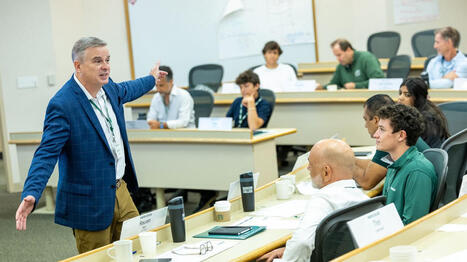







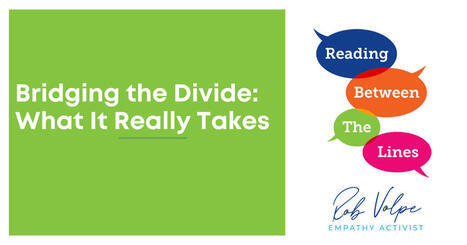


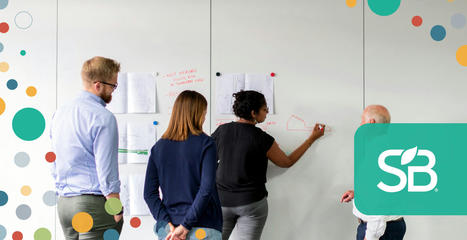


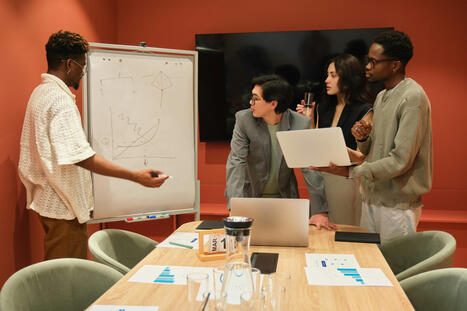







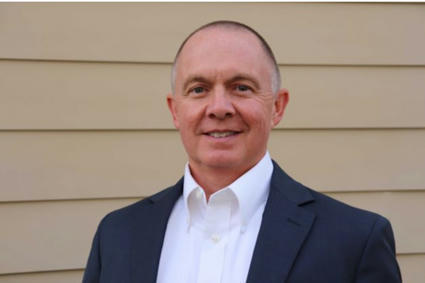







People with emotionally rigid responses to situations, both negative and positive, often get “stuck” in seeing situations from one, fixed perspective. This can lead to depression, anxiety, and overall decreased quality of life. In 1983, James Pennebaker, social psychologist and professor at the University of Texas at Austin, set out to find a different option. Pennebaker explored the idea of spending some time each day writing about emotionally significant experiences. Through his own writing, research, and experiments, Pennebaker learned that this process allowed him and participants to “step out” of their experiences and gain a new perspective on them.